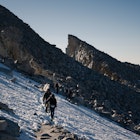
Oct 31, 2025 • 8 min read
Phnom Penh can be overwhelming, but travelers can find the city's rhythm in its resurgent arts community, banging nightlife and eclectic food scene.

Oct 31, 2025 • 8 min read
Phnom Penh can be overwhelming, but travelers can find the city's rhythm in its resurgent arts community, banging nightlife and eclectic food scene.

Oct 31, 2025 • 3 min read
Mexico City-based photographer Fernando Farfán has visited Quintana Roo at least once a year these past seven years. Here are his recent photos.

Oct 31, 2025 • 10 min read
The gift of Fez lies in its unscripted moments. Make time for these top activities.

Oct 31, 2025 • 8 min read
The capital city is often overlooked, but its history – along with its art, food and nightlife scenes – make it worth visiting for a while.

Oct 30, 2025 • 6 min read
Croatia's more than 300 wine regions are largely off the mainstream radar – discover the country's earthy reds, crisp whites and over 130 grape varietals.

Oct 30, 2025 • 11 min read
The ruined Maya city of Copán in Honduras reveals fascinating insights into the ancient history of Central America. Here's what to know when visiting.

Oct 30, 2025 • 10 min read
Before heading to South Carolina, check out these 16 tips on planning, etiquette, and health and safety.

Oct 30, 2025 • 8 min read
You don’t need to book an expensive cruise to discover the beauty of the Galápagos. Use these top tips to travel independently and stretch your budget.

Oct 30, 2025 • 8 min read
Discover the regional capital at the edge of the Amazon, where mighty rivers meet the world’s most unlikely opera house. Here’s all you can do in Manaus.

Oct 30, 2025 • 6 min read
Wander through a festive European-style market in the US. Here are the best.

Oct 30, 2025 • 6 min read
El Salvador is Central America’s smallest country, but there's plenty to see and do. Explore more easily with this guide to getting around in El Salvador.

Oct 30, 2025 • 8 min read
Stick around in Nadi, the arrival point for most visitors to Fiji, for these top experiences.

Oct 30, 2025 • 5 min read
San José is filled with world-class museums, creative cuisine and avant-garde art. Get to know “Chepe” with this guide.

Oct 30, 2025 • 6 min read
Plan your trip to Thailand’s northern city of Chiang Mai with these tips on safety and etiquette.

Oct 29, 2025 • 5 min read
Kaleidoscopic tropical fish, spectacular coral reefs and year-round warm waters make the Caribbean one of the best places for snorkeling.

Oct 29, 2025 • 5 min read
A shining cultural symbol of Argentina, the musical style and dance of tango was born in (and remains alive and well) in Buenos Aires.

Oct 29, 2025 • 7 min read
There’s nothing quite like the restorative high from a dip in a proper thermal pool. Add to this year's travel roster these incredible European hot springs.

Oct 29, 2025 • 9 min read
From getting to the Mamanucas to exploring the rugged landscape of Viti Levu, here are the best day trips.

Oct 28, 2025 • 5 min read
Come winter, Utah delivers epic snow. Excellent for skiers and riders of all levels, these resorts offer a great day on the hill with unbeatable amenities.

Oct 28, 2025 • 6 min read
Our writer shares his tips for fraternizing with the locals while eating food that tastes like your nonna made it.

Oct 28, 2025 • 8 min read
Plan your Mt Whitney hike with this guide to route options, trail conditions, permits and gear.

Oct 28, 2025 • 7 min read
There’s much more to Den Haag (The Hague) than meets the eye.